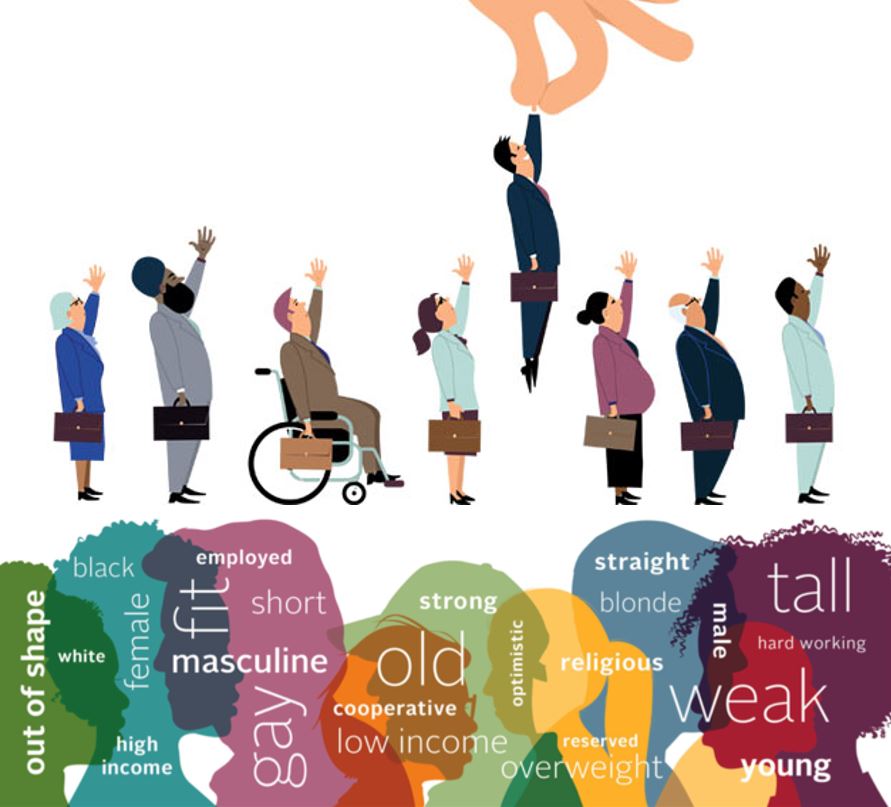What is Unconscious Bias?
Assessment Outcomes –
1.2. Identify the impact these differences between individuals could have on working together.
2.2. Outline at least 2 key principles of inclusion to promote equality in the workplace
3.1. Give an example of a scenario illustrating discrimination at work and an approach to challenging it.

Unconscious biases, also known as implicit biases, are the underlying attitudes and stereotypes that people unconsciously attribute to another person or group of people that affect how they understand and engage with a person or group.
Unconscious bias occurs when people favour others who look like them and/or share their values. For example a person may be drawn to someone with a similar educational background, from the same area, or who is the same colour or ethnicity as them.
A manager who wasn’t successful at school may listen to, or be supportive of, an employee who left school without qualifications because, subconsciously, they are reminded of their younger self. The same can be true of a manager who is educated to degree level, favouring employees who have also been to university. This is known as affinity bias, because they feel an affinity with the person as they have similar life experiences.
It is important to recognise the effect unconscious bias has on the workforce; not only does it make it harder for applicants from traditionally underrepresented backgrounds to get hired, but it also leads to employers losing out on valuable, talented people who can drive spectacular business results.
See handout: – 12 TYPES OF UNCONSCIOUS BIAS TO AVOID IN THE WORKPLACE
How to overcome unconscious bias?

Company leaders are always on the lookout for innovative ways to attract customers and increase sales. Diversity is an effective way to draw new employees who bring a wide range of talents, perspectives and problem-solving skills. A homogeneous employee population runs the risk of approaching marketplace challenges using the same ideas and thinking styles as they always have. A multicultural group not only generates fresh perspectives and suggestions, but they also can appeal to a more diverse network of customers
- Be aware of unconscious bias.
- Don’t rush decisions rather take your time and consider issues properly.
- Justify decisions by evidence and record the reasons for your decisions, for example during a recruitment exercise.
- Try to work with a wider range of people and get to know them as individuals. This could include working with different teams or colleagues based in a different location.
- Focus on the positive behaviour of people and not negative stereotypes.
- Employers should implement policies and procedures which limit the influence of individual characteristics and preferences.
12 Types of Unconscious Bias To Avoid in the Workplace<- - download worksheet
This handout works well as a guide on examples of unconscious bias that commonly affect candidates and employees in the workplace. We’ve also provided
some tips for ways to avoid them.
